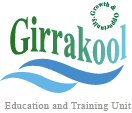26
OctoberAdd These 10 Mangets To Your Therapist Chiang Mai
Introduction
Medicine addiction is a complex and pervasive concern that impacts individuals, people, and societies globally. It is characterized by the compulsive using medicines despite their particular harmful effects. Drug addiction is a global problem that transcends social, personal, and economic boundaries, affecting people of all centuries, events, and backgrounds. This report is designed to provide a short history of drug addiction, highlighting its factors, results, and feasible solutions.
Factors behind Drug Addiction
Various elements donate to the introduction of drug addiction, including genetic, ecological, and behavioral elements. Genetics are likely involved in deciding ones own susceptibility to addiction. Research suggests that certain hereditary factors can make particular individuals prone to getting addicted to medications. Ecological elements, particularly contact with drug abuse within the family members or neighborhood, also perform a substantial role. Additionally, psychological and social facets, including stress, mental health problems, and peer pressure, can play a role in addiction.
Results of Drug Addiction
Drug addiction has serious repercussions on individuals and culture in general. At a person level, drug addiction can substantially impair your actual and psychological state. Drug abuse can lead to chronic conditions, including liver and lung damage, heart problems, and a heightened risk of infectious conditions like HIV/AIDS. More over, drug addiction often results in emotional conditions including despair, anxiety, and psychosis. Additionally, addiction can stress individual interactions, cause monetary uncertainty, while increasing the likelihood of unlawful involvement.
On a broader scale, Old medicine hospital chiang mai addiction puts a large burden on culture. It impacts healthcare methods, as addiction-related medical remedies and rehabilitation programs in many cases are costly. Moreover, medicine addiction contributes to increased crime prices, as people may turn to illegal activities to sustain their addiction. In addition, drug-related accidents and impaired efficiency hinder financial growth and development.
Possible Solutions
Handling drug addiction calls for an extensive and multi-faceted approach. Avoidance efforts should give attention to education and increasing understanding about the dangers of substance abuse. Effective techniques include school-based avoidance programs, neighborhood understanding promotions, and specific treatments for vulnerable populations.
Furthermore, therapy and rehab options needs to be made obtainable and affordable to all the those experiencing medicine addiction. This calls for establishing rehab centers, providing counseling and therapy, and making sure the availability of medication-assisted treatment approaches including methadone or buprenorphine. Support communities and aftercare programs are vital in ensuring long-lasting data recovery.
Moreover, there clearly was a need for stricter regulation and control inside pharmaceutical business to stop the misuse of prescription drugs. Ensuring the accessibility to alternative problem administration practices can decrease the reliance on opioids, decreasing the threat of addiction.
Conclusion
Medicine addiction is a complex issue with profound effects for folks and culture. Its causes are multi-faceted and require several ways to avoidance and therapy. By increasing awareness, enhancing education, improving accessibility treatment, and applying stricter regulations, culture may take significant actions toward decreasing the prevalence and impact of drug addiction. Combating medicine addiction necessitates collective attempts from governments, health care professionals, communities, and people to mitigate its effects and offer support to those impacted.

